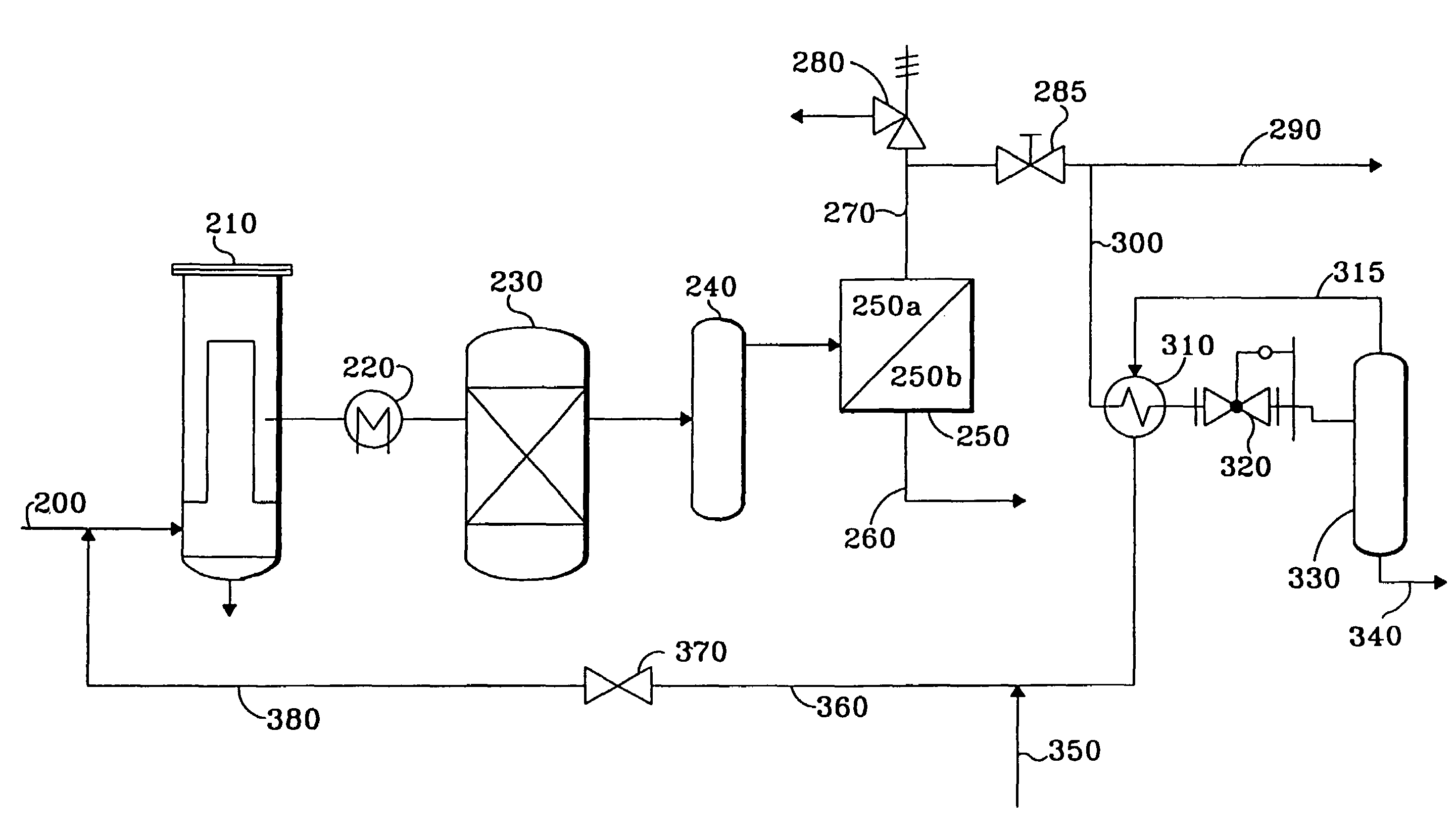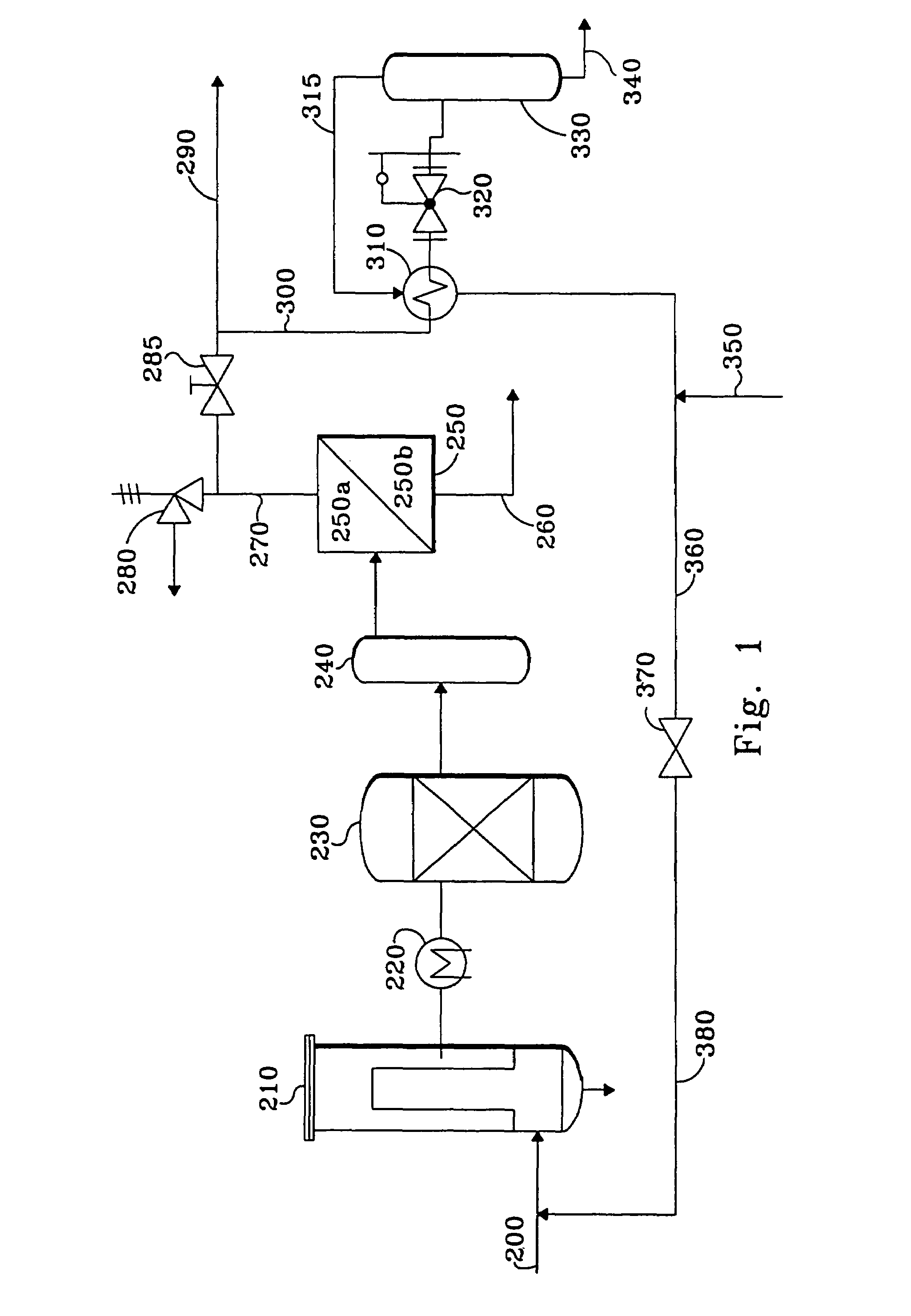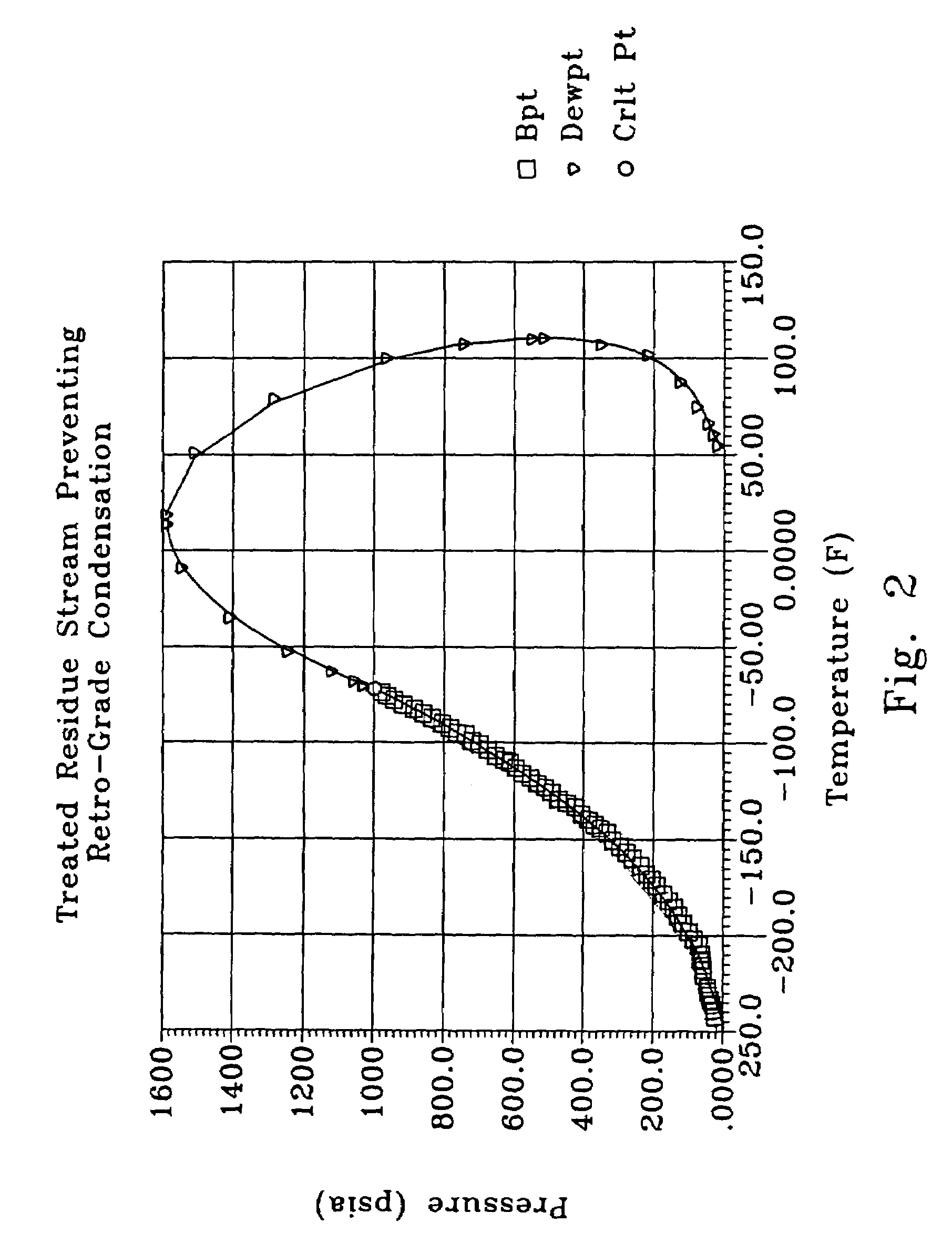Process for safe membrane operation
a safe and reliable technology, applied in the direction of colloidal chemistry, separation processes, by membranes, etc., can solve problems such as catastrophic failur
- Summary
- Abstract
- Description
- Claims
- Application Information
AI Technical Summary
Benefits of technology
Problems solved by technology
Method used
Image
Examples
example 1
Condensation Followed by Depressurization
[0041]In Example I, a hydrogen gas stream was sparged as described herein above and passed to a membrane micromodule for about 6 hours at a pressure of about 3.6 MPa a temperature of about 24° C. measured at the sparger while the temperature of the micromodule was maintained at about 37° C. (100° F.) without a non-permeate flow from the membrane module. The micromodule was then depressurized to atmospheric pressure. Following depressurization, a gas mixture containing 10 vol-% carbon dioxide and 90 vol-% methane was passed to the membrane micromodule to repressurize the micromodule to about 3.6 MPa (515 psia) at a temperature of about 49° C. (120° F.) and the selectivity of the membrane was determined. The results are shown in Table 1. Prior to the test, the four samples tested had selectivities of about 6 and permeabilities of about 4. As shown in column O, immediately following condensation and depressurization, the average permeability rea...
example 2
[0043]A membrane plant is designed to operate in the supercritical region above the phase envelope. Retrograde condensation will occur as the system is depressurizing during an emergency shut-down. The change in pressure before condensation will occur is approximately 2.4 MPa (350 psia). The process disclosed will use Joules-Thompson cooling as the feed stream is decreased from 11.0 to 8.6 MPa (1600 psia to 1250 psia) to change the composition of the purge gas stream and provide ˜38° C. (100° F.) circondentherm. The membrane system can then be purged with this gas and then decreased in pressure to avoid retrograde condensation.
[0044]During shut-down, a portion of the sales gas will be sent to a Joules-Thompson valve that will decrease the pressure to create a constant downstream temperature. The resulting two-phase mixture will then be separated in a gas liquid separator with de-mister pads. The gas stream from the separator will be sent to the existing filter coalescer to remove an...
PUM
| Property | Measurement | Unit |
|---|---|---|
| permeate pressure | aaaaa | aaaaa |
| temperature | aaaaa | aaaaa |
| pressure | aaaaa | aaaaa |
Abstract
Description
Claims
Application Information
 Login to View More
Login to View More - R&D
- Intellectual Property
- Life Sciences
- Materials
- Tech Scout
- Unparalleled Data Quality
- Higher Quality Content
- 60% Fewer Hallucinations
Browse by: Latest US Patents, China's latest patents, Technical Efficacy Thesaurus, Application Domain, Technology Topic, Popular Technical Reports.
© 2025 PatSnap. All rights reserved.Legal|Privacy policy|Modern Slavery Act Transparency Statement|Sitemap|About US| Contact US: help@patsnap.com



